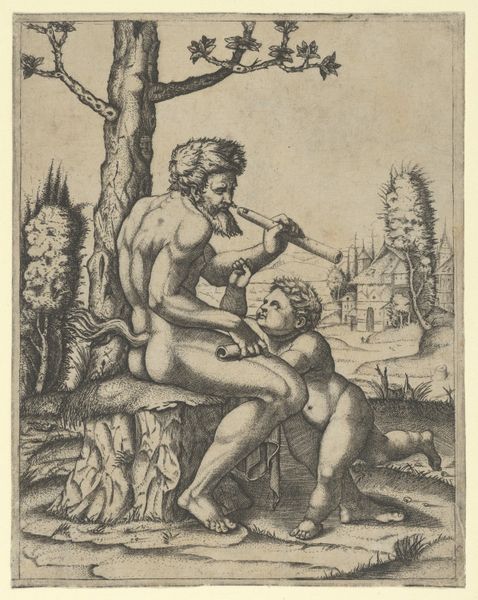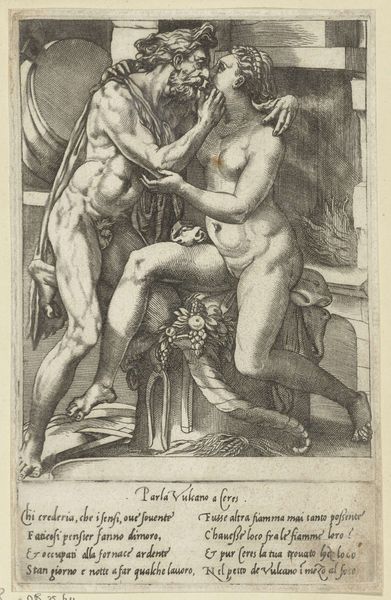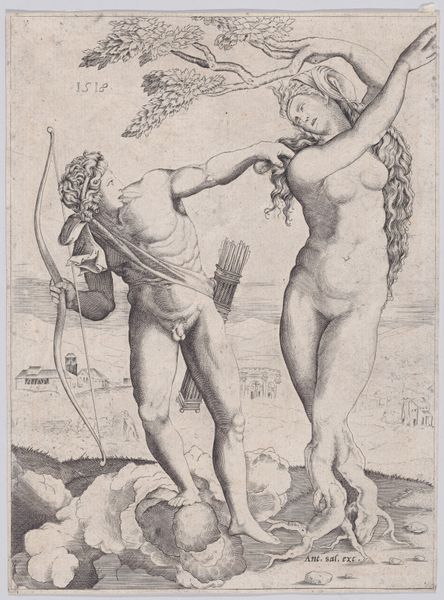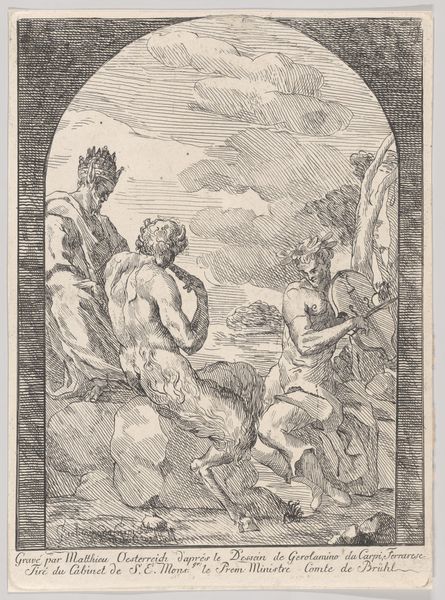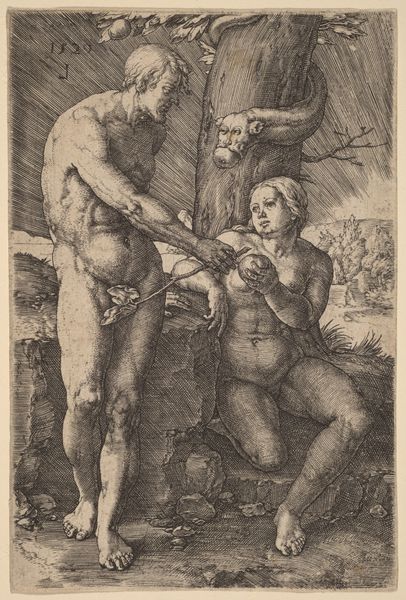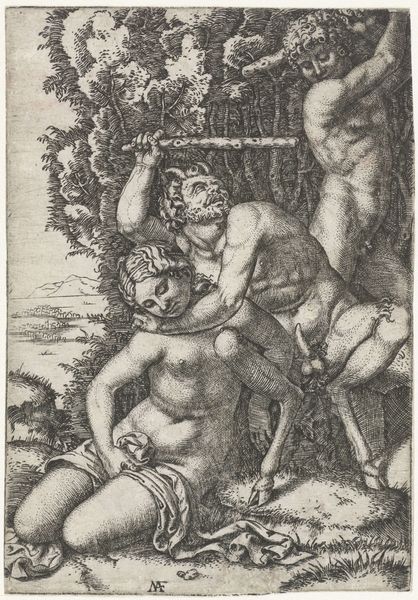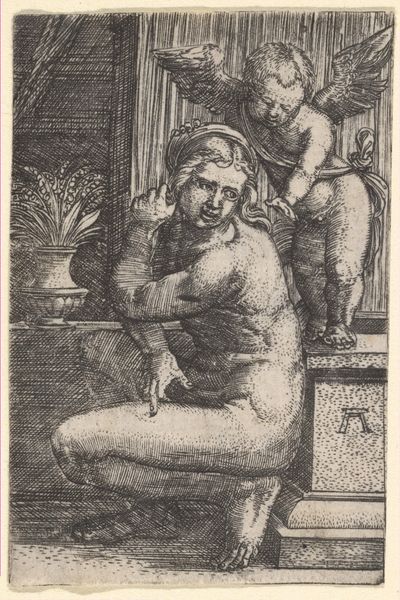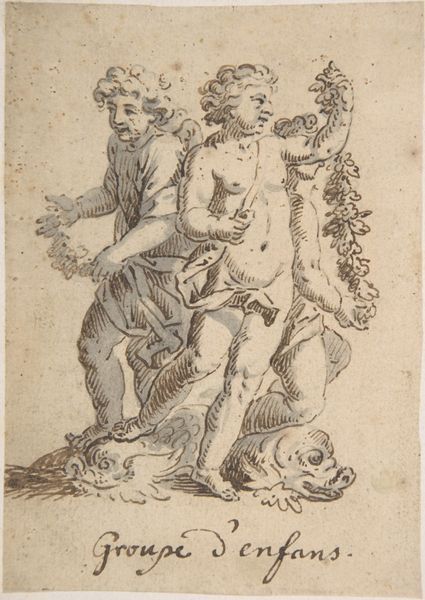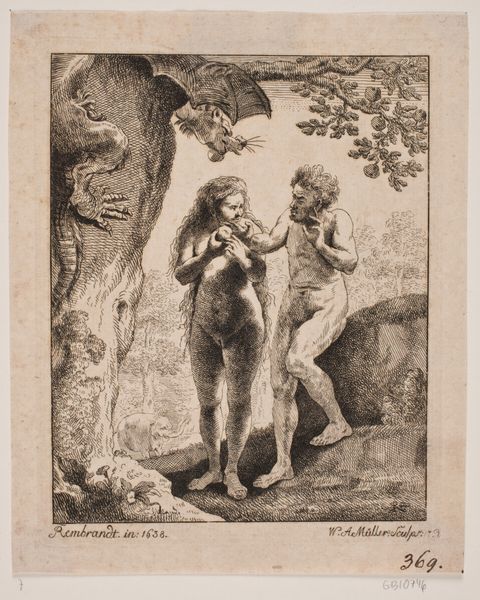
drawing, print, engraving
#
portrait
#
drawing
#
baroque
# print
#
figuration
#
line
#
genre-painting
#
engraving
Dimensions: Sheet: 4 1/16 × 2 7/8 in. (10.3 × 7.3 cm)
Copyright: Public Domain
Editor: Here we have Anton Maria Zanetti the Elder's engraving, "Two Children Playing with a Lamb," created in 1725. It feels very intimate, doesn’t it? It’s almost as though we are peering into a private moment. How do you interpret this work? Curator: Well, beyond the initial sentimentality, it's crucial to unpack the social construction of childhood that this engraving participates in. Consider the Enlightenment ideals of innocence and naturalness. To what extent does this image reinforce those ideas, and for whom? Editor: That’s an interesting point! It's easy to just see it as a charming scene, but the context certainly adds a layer of complexity. So, the children are sort of emblems of a particular worldview? Curator: Precisely. Lambs often symbolize innocence, of course. And that idea of "innocence" isn't neutral. We should question whose version of childhood is being presented, and what societal expectations or moral lessons are being subtly communicated. How does it shape, perhaps limit, our understanding of youth and their interaction with the natural world? Editor: I never really considered that. It’s not just a record; it’s an argument about how childhood *should* be. It makes me wonder what kinds of childhoods are excluded from this image and historical record. Curator: Exactly! And the exclusivity of the image underscores the socio-economic disparities. Were these children from an elite background, afforded a life of leisure in which playful innocence was possible? The drawing itself then becomes an artifact loaded with the signs and signifiers of a certain class, promoting its self-image. Editor: That has definitely changed my perspective on the image. Thanks so much. I now see that it's not just a simple depiction but reflects very specific cultural values. Curator: My pleasure. It highlights how crucial it is to analyze not just the subject of the work, but what its cultural role might have been, and whose narratives it silences or celebrates.
Comments
No comments
Be the first to comment and join the conversation on the ultimate creative platform.
